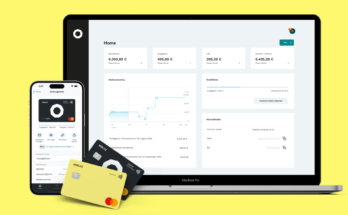We don’t notice the chair we sit on every day — unless it wobbles. The same is true for the digital tools we use. If something always works, we stop thinking about it. If it doesn’t, we notice immediately.
This principle holds especially true for apps we return to repeatedly. The less attention a tool demands from us, the more space it leaves for focus, action, or even instinct. And for people who interact with apps where time and rhythm matter, that space is everything.
The Real Role of the Interface
Most users don’t judge apps by their appearance — not really. What they remember is how they feel during use. Friction is what sticks. Lag. Confusion. Unexpected behaviour. Even tiny things like a loading delay or a misplaced setting button become a reason to switch or hesitate.
A platform earns its place not through features but through familiarity. It has to do what the user expects it to do — not once, but always.
This is why the most valued apps are the ones that stay out of the way. The ones that make people feel capable, not cautious.
Why Trust Is the Real Feature
Users will forgive a lot. Bugs happen. Designs change. But what they won’t forgive is feeling misled. If an app says something is saved, it better be there tomorrow. If it promises security, users want to see it in action — not in marketing.
That’s where design meets ethics. People don’t want magic. They want consistency. Even more so when financial tools or behavioural tracking are involved, in those environments, trust isn’t optional — it’s foundational.
This is exactly why users often find themselves asking questions like whether is parimatch app safe — not out of idle suspicion, but because long-term use depends on assurance. And not once but continuously.
Control Without Complexity
A good app makes you feel in control without forcing you to make every decision. It anticipates what matters to you and reduces what doesn’t. This doesn’t mean oversimplifying — it means clarifying.
For example:
- Showing relevant stats without overloading the screen
- Letting users hide markets or tools they don’t use
- Keeping passwords and identity flows tight but not tedious
Simplicity isn’t about doing less. It’s about doing just enough — with precision.
The Weight of Routine
Once people form habits in an app, they don’t want to relearn them. They want to deepen them. This is especially important on platforms used daily or weekly. Any disruption — like moved menus, unnecessary animations, or cluttered updates — becomes a point of resistance.
That’s why design teams have to think long-term. Not just about first use but second, tenth, and hundredth. Each return is an opportunity to reinforce ease — or break it.
When the app meets you where you are, you stop thinking about it. That’s success.
How Confidence Builds Behavior
People act differently when they trust their environment. They make faster decisions. They explore. They take ownership. But if that trust is broken — even slightly — the behaviour changes. Hesitation replaces instinct. Control turns into second-guessing.
That’s why it matters that the app feels personal, not generic. Safe, not scripted. And not just in terms of data — but in rhythm, layout, and logic.
When users feel seen by a platform, they stay. Not because they’re locked in — but because they’re understood.
What Real Safety Looks Like
It’s easy to say an app is secure. But what does that actually mean to a user?
It means:
- Seeing the same login options in the same place
- Knowing what happens if they forget their password
- Trusting that their data won’t disappear after a crash
- Getting notified clearly when something changes
Safety isn’t a feature. It’s a tone. A thread running through the whole experience.
Final Thought
Digital tools aren’t just products. They’re environments. And like any environment, they affect how people think, move, and feel.
The most powerful apps are the ones you barely notice because they let you focus on your own logic — not theirs. Because they give you space, speed, and certainty — not noise, nudges, and doubt.
And in that space, trust becomes the real interface. One that doesn’t blink or buzz — it just works.




